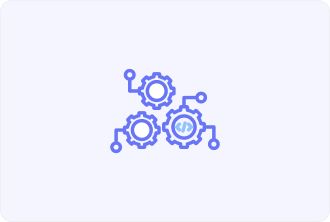Functional Language Definition

Functional programming is a computation paradigm that presents programs as the way to perform mathematical function evaluations. These functions are free of changing states and, at the same time, free of mutable data. This has been done in order to make sure that there is no issue in this kind of coding.
Conceptually, they lend a very powerful framework to deal with and manipulate data in a manner that it becomes predictable as well as efficient. This article presents a functional language, principles of functional code development, and benefits of its application within a programming approach.
Functional Language Characteristics
It is hence viewed as a language that can be considered to support, and even encourage functional principles at the same time as emphasize the use of functions as primary building blocks of computation. In such a language, a functional language will ensure that functions are always treated as first class residents.
This means they can, or maybe passed as arguments to other functions, returned as a value from another function, or sometimes assigned to variables exactly the same way any object in any other language could.
The best examples of functional programming languages are Haskell, Lisp, Erlang. Such languages can put complex computations in compact ways with self-descriptive code. A large number of features inside functional languages, such as pattern matching, first-class functions, and immutability in many cases, result in much cleaner and more writable code.
On the other hand, the absence of side effects and mutable state improves reasonability of behavior for functional languages. More exactly, functional programming makes languages more reliable.
Functional Code Development
Its essence is in developing programs that confirm to the tenets of the functional programming paradigm. That would mean an emphasis on pure functions, evident in the case when identical output shall always be produced for identical input, with no possibility of side effects. What all this has to do with is that the code is modular, testable, and just easier to understand.
Higher-order functions serve well in the development of functional code where the functions pass other functions in as arguments; indeed, they can return those functions. They really provide access to much greater functionality from both simple and complex operations, as well as being able to make available many times more source code that can be reused.
The other very important features include the function composition by which simple functions are composed so as to give higher operators. This allows for the promotion of declarative programming—stating only what, not how—during the process of problem solving.
Language With Functional Approach
They also support most functional programming concepts, if not purely functional, being languages that adhere to a functional approach. Examples are Python, JavaScript, and Scala. This support from the languages can be realized in writing code in a functional style through features like first-class functions, anonymous functions—lambdas—and immutability.
For example, in JavaScript, at the hand of the developer are functions such as map, reduce, filter that assist in dealing with arrays in a functional manner. In Python, adhering to best practice in functional programming is easier and more convenient due to list comprehensions and lambda functions.
Scala offers very good support for both paradigms because it acts as something of an object-oriented and functional programming bridge between the two—hence allowing one to code flexibly and expressively.
The languages also have functional approaches that make the code more concise and readable. These concepts of functional programming help algebraically derive more predictable programs with lesser errors.
Conclusion
Functional programming, together with the associated functional languages, is a very powerful and different way of writing software. Some other increasingly important basic concepts include immutability and pure functions, in addition to higher-order functions. This can be achieved by the use of inbuilt tools that any functional language provides to a programmer for writing easily understandable—hence, more maintainable—code, which is easy to test.
Functional programming—its principles are not applied only to so-called pure functional programming languages, but also show ways to increase the quality of code in multi-paradigm languages, like Python or JavaScript.
If the user is conversant with these practices, functional programming can yield more robust and scalable software. This would seem to be the case: as long as there is huge demand for trustworthy, maintainable code, the basic principles and practices of functional programming form the core of development.